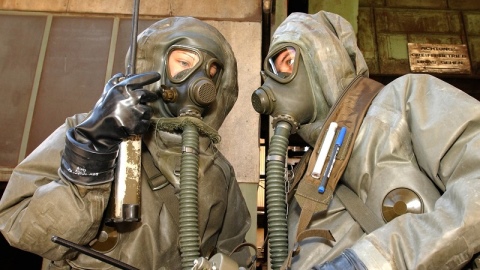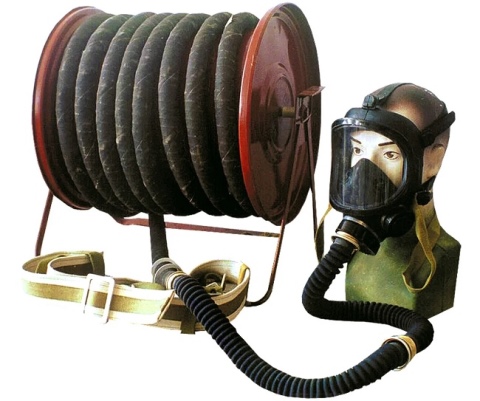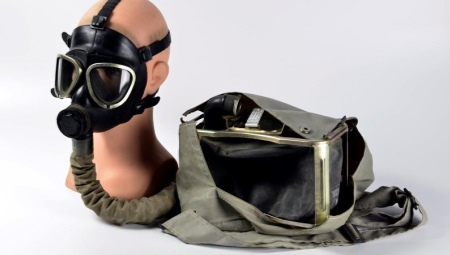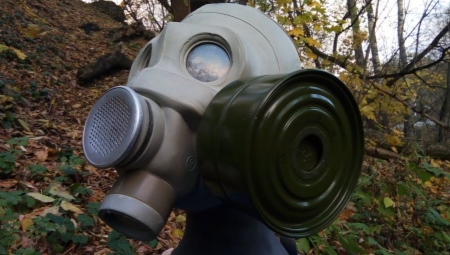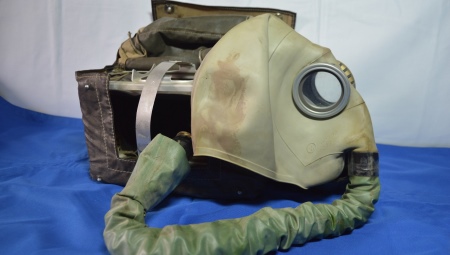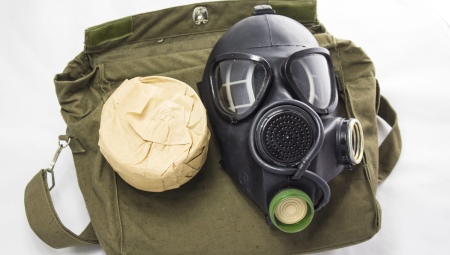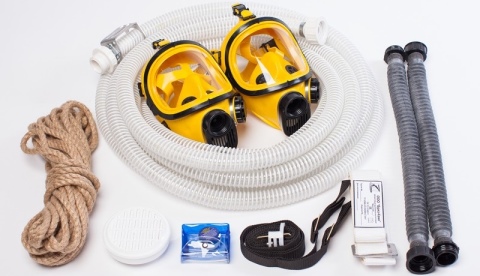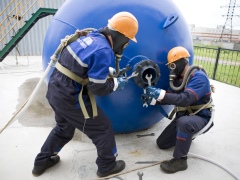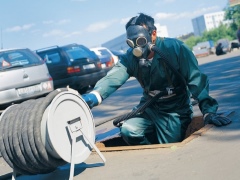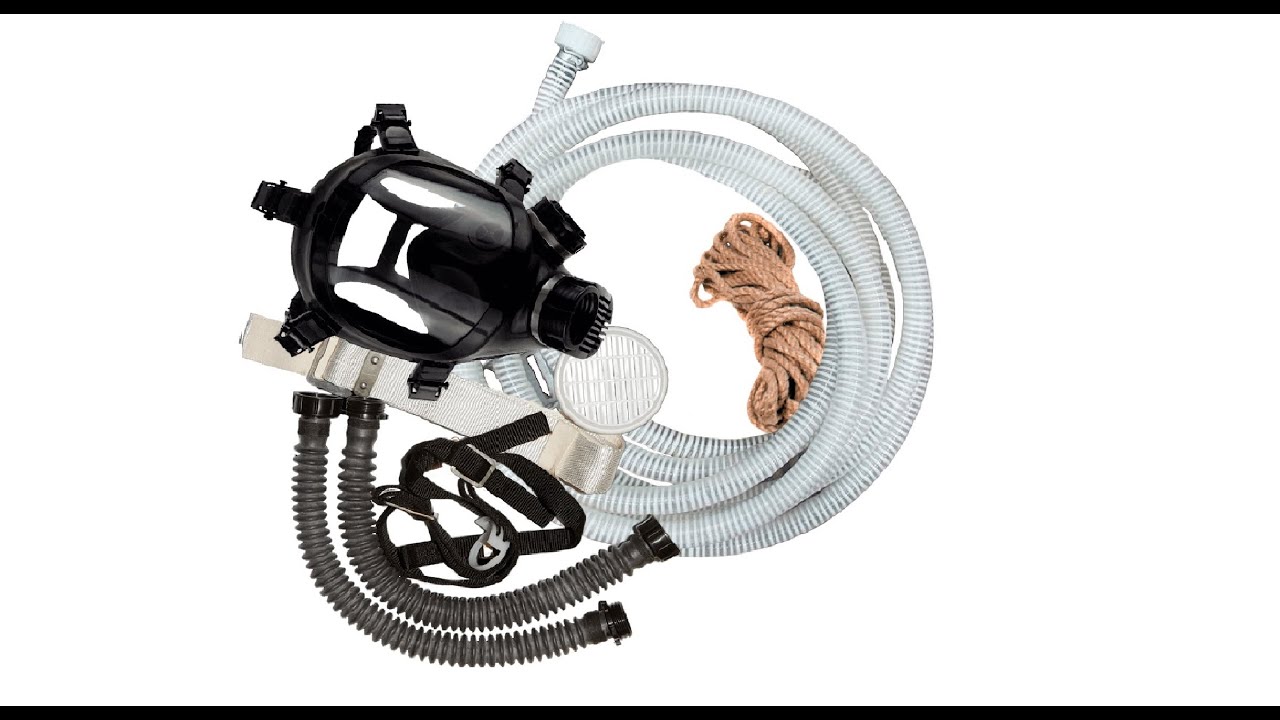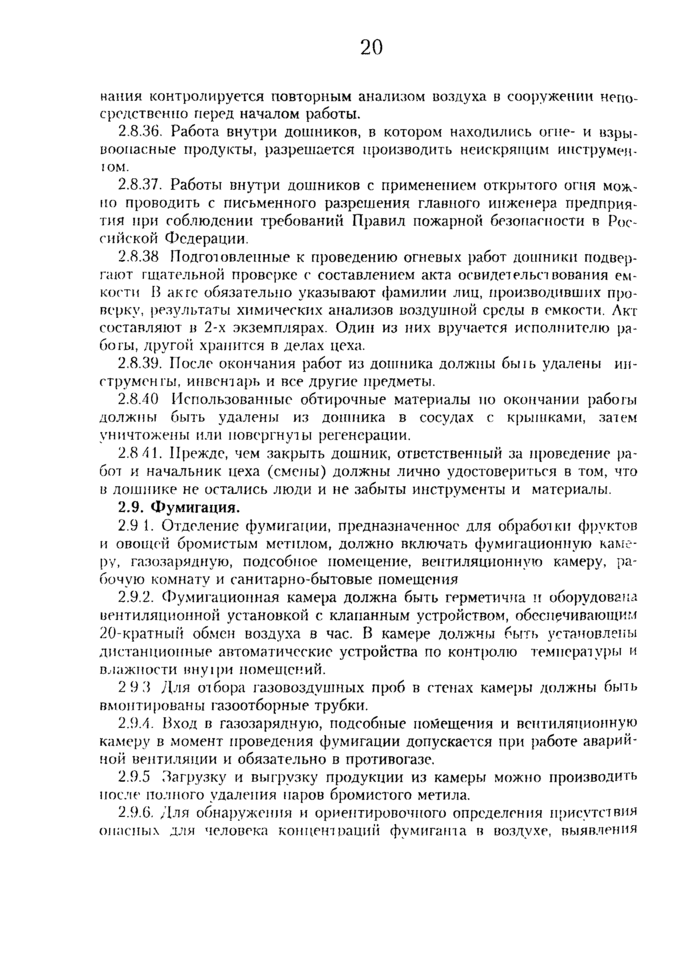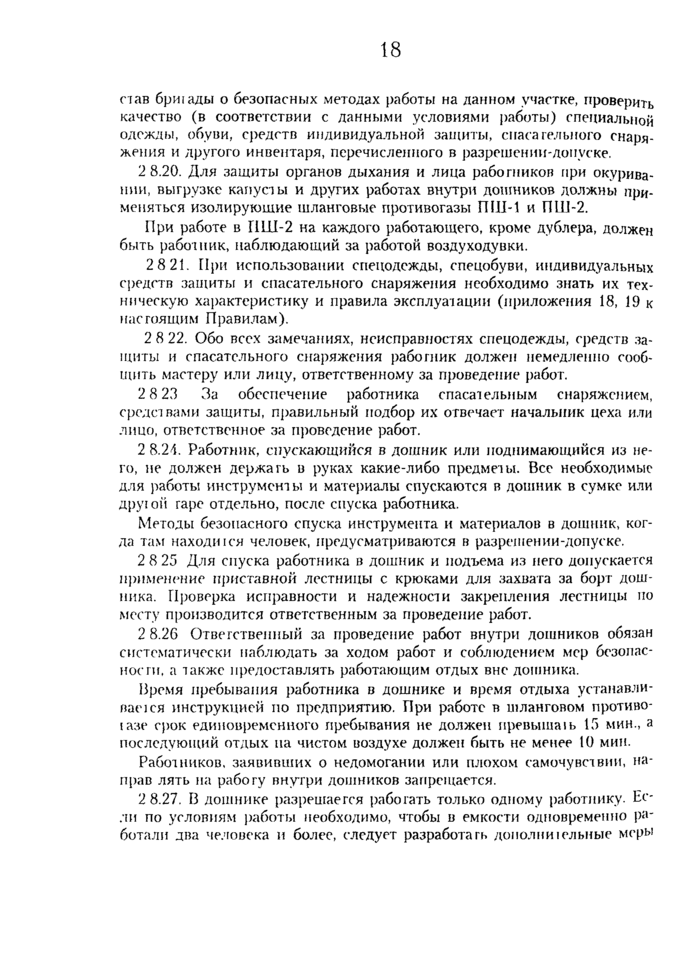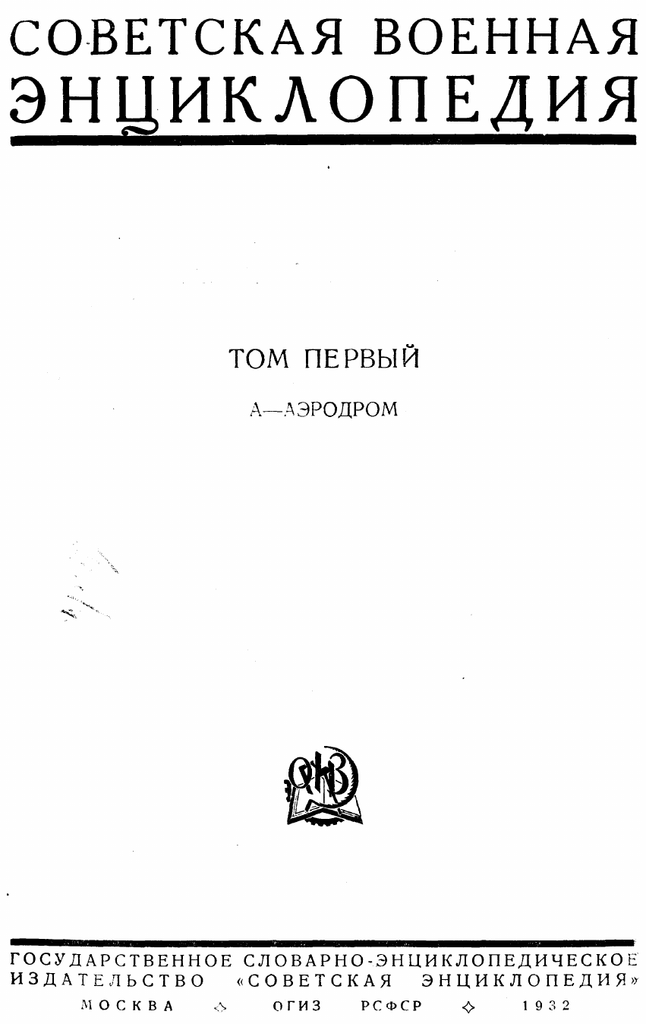HOSE ANTI-GASES OF TYPE PSH-1 and PSH-2
4.2. A hose gas mask completely isolates the human respiratory system from the surrounding atmosphere from any gas, steam, smoke.
4.3. Hose gas masks are self-priming type PSh-1 and with forced air supply PSh-2.
4.4. The PSh-1 hose gas mask has the following components:
- Mask with two corrugated tubes connected in series.
Hose 10 m long for suction of clean air.
Belt for attaching the hose and connecting the rescue rope.
A pin with which one end of the hose is fixed in the clean air area.
Filter box for cleaning the inhaled air from dust.
A suitcase for storing and carrying gas mask parts.
4.6. A hose gas mask of the PSh-2 type includes the following elements:
- Electric motor for blower rotation.
Air blower with two connections for supplying air to hoses with manual or electric
driven.
Two hoses up to 20 m each, through which air is supplied under the masks.
Two masks with elongated corrugated tubes connecting masks with hoses.
The box in which the electric motor and the blower are installed.
4.8. When performing work in oil tanks, wells, cisterns and other confined places,
each worker must be served by two people. One provides air supply,
the other holds the signal rope and assists the worker if necessary.
4.9. A safety belt should be worn over the workwear on the worker, to the shoulder straps
which is attached to the signal & rescue rope. The led out end of the signal
ropes must be at least 5 meters long.
4.10. The rescue rope and rescue harness must be tested for strength as they
serve as a means of communication between the person working in a gas mask and his assistant, as well as for
removing the worker from the area in case of an accident. A hose can also serve as a rescue.
All its connections are made strong, capable of withstanding the load when pulled
person.
4.11. If the operator does not follow a conditional response to the signals of the observers, they
must immediately remove it from the area.
4.12. Preparation for entering a gas-polluted area must necessarily take place with the participation of
work supervisor (foreman, site manager) and consist of the following:
- A thorough examination of the hose, corrugated tube and mask.
In checking the strength and reliability of the connection of all parts of the gas mask.
In the purge of the dust hose. Blowing is done with compressed air or several
outlets from the end to which the corrugated tube is screwed. Before purging
the filter box is turned off.
4.14. When using a PSh gas mask, a worker can enter a gas-polluted area for
work only after he has made sure that fresh air enters the
the amount sufficient for normal breathing.
4.15. The duration of continuous work in a hose gas mask should not exceed 30
min. followed by rest in clean air for at least 15 minutes.
16. After finishing work, all parts of the gas mask are cleaned of dirt and dust, placed in a suitcase until next use.
4.17. The person responsible for the good condition of the gas masks must, at least once every three months, check the serviceability of the gas masks and note the result of the check in the "Record book of checking hose gas masks."
Inspection and inspection log for PSh-1 hose gas masks. PSh-2
| date | Result of checking | Signature |
Note: When checking, pay particular attention to the working condition of the mask, hose, rescue harness and rope and the forced air device.
Classification of gas masks
At the moment, gas masks are divided into 2 types:
- Filtering;
- Insulating.
In filtering gas masks, a box with a filter is attached to the mask, which cleans the inhaled air from suspension of microparticles (dust, smoke), toxic gases, hazardous vapors and other harmful chemicals, from microbes.
Isolating - a type of gas mask, which in turn is divided into two subtypes:
- autonomous - supplied with a compressed air cylinder; when inhaling, clean air enters the respiratory organs from the cylinder, and when exhaling, carbon dioxide is removed into a special absorber;
- hose-type - in which the air supply is provided from the outside through the attached long tubes stretching from stationary sources; air supply is carried out using compressors or other similar devices.
In accordance with the field of application, several types of gas masks are distinguished:
- for military needs;
- for industrial needs;
- for the civilian population;
- children.
The devices used for military needs are a type of the most technologically advanced gas masks. They are made of high quality materials and are regularly upgraded. The main tasks of technologists when optimizing such devices is to lighten their mass and increase the volume of the field of view.
Not much differ from military gas masks and protective equipment used by workers in such paramilitary areas as rescuers and firefighters.
Both in military affairs and in areas close to military affairs, all types of gas masks are used depending on the situational need: both filtering and insulating.
Gas masks used for industrial purposes are most often insulating. Labor safety inspectors have long established that the performance of work in filtering devices does not give the desired protective effect, but at the same time leads to an increase in workers' injuries. Isolating gas masks as a means of protection are also used in production to a limited extent, only as a temporary measure and in cases of emergency. Moreover, each worker knows the gas mask assigned to him and undergoes a course of necessary training in its operation.
In the event of a danger of being hit by toxic gases and other harmful substances, gas masks are handed out to the population by the local headquarters of civil defense and emergency situations.
Children's gas masks are divided into models designed for children from 1.5 to 7 years old, and designed for children from 7 to 16 years old. Additional types of protective devices for children under 1.5 years old are special protective chambers, inside which the child is placed in case of danger.
INSPECTION AND TESTING OF BELTS, CARABINES, ANTI-GAS ROPES TYPE PSH-1, PSH-2
2. Testing of rescue harnesses is not allowed in the presence of the following defects:
2.1. Damage (tear or cut of any size) to the waistband or shoulder straps.
2.2. Damaged fastening belts.
2.3. Defective buckles.
2.4. No washers on the rivets.
2.5. Rivet cut in the waistband of the straps or belts.
2.6. The presence of lack of density or protrusions in the place of the hinged fastening of the valves.
2.7. Weakness of the carabiner springs.
3. Rescue harnesses, carabiner and rope are periodically tested for
strength with a statistical load of 200 kg twice a year.
4. When testing the rescue harness to the ring of this harness, fastened with buckles and
suspended on both straps, attach a load, under the influence of which the belt is 5
min. The test is considered successful if after removing the weight on the belt there are no
damage.
5. A carbine with an open bolt suspended by the eyelet is tested under the same load 5
min. The carabiner is considered to have passed the test if, after removing the load, it does not
the shape and size will be changed, and if the released bolt of the carbine is free
returns to its place.
6. The rescue rope is tested by suspending a test load of 200 kg from it.
for 15 min. Residual elongation of the rope, determined by measuring its length before and after
tested, should not exceed 5 ° of the original length.
After the tests, the rope is inspected, and it should not be damaged.
7. The test results of the rescue harness and the rope shall be entered in a special journal or
are drawn up by an act, and a tag indicating the belt number is attached to the belt and rope,
statistical load and date of next test
Common mistakes
Individual the protective device will be put on it is correct if the area of the eyepieces is flush with the line of the eyes, and the helmet-mask fits snugly and without folds to the head and face. After the device is put on the head, the first action is to exhale air into the gas mask, thereby expelling it from the gas mask circuit. Such air is conventionally considered contaminated, since it got inside the device during the process of putting it on.
After wearing personal protective equipment, it is not recommended to make sudden head movements.
It is also necessary to pay attention to the fact that breathing should be performed regularly and deeply. If you need to run, then the beginning of the process begins with light jogging, and then the pace is increased and the rhythm of breathing is adjusted to it.
Another common mistake is wearing a gas mask wrinkled or skewed. Such an oversight threatens the user with the fact that there is no vacuum suction of air along the line of contact between the mask and the face, which means that the protective structure will be leaky.
In addition, it is important to pay attention to the position of the connecting tube - it must not be allowed to be kinked or twisted. Other errors are considered to be the wrong size of the product, the absence of a tag on it, dirty valves, unadjusted straps of the head part of the helmet-mask or the gas mask does not have a complete set.
You can remove the gas mask in an area clean from dangerous contamination or by using the command “Remove the gas mask!”. The procedure in this case is assumed to be as follows:
- take the valve box with your hand and pull the helmet towards you;
- pull the helmet forward and upward, freeing the chin and face, and then the entire head;
- fold the personal protective equipment and put it in the carrier, fastening the fastener.
In winter, the use of a gas mask can also be performed incorrectly. Often, users forget to warm the valve box with their hands from freezing, and also from time to time to blow the exhalation valves with a sharp movement of air on exhalation.
How to put on a gas mask, see below.
I. PROTECTIVE HELMETS
General purpose safety helmets
Hard shell made of high-strength polyethylene or polycarbonate. Weight up to 300 gr. Headband made of textile or plastic bands with 4 - 6 attachment points. Easy adjustment to fit your head. The helmet must have:
- adjustable strap for correct attachment to the head;
sufficient space above the head for ventilation;
pockets for attaching glasses, headphones, shields;
The guaranteed shelf life of a helmet is the total period of storage and operation. It is counted from the date of manufacture, which is marked on the inside of the visor.
ATTENTION: It is forbidden to carry out any work with technological equipment or hand tools, as well as to be near such work without protective helmets!
1.3. Mandatory certification for compliance with GOST 12.4.128-83 and EN 397.
1.4. Producers: Technoavia, Uvex. 3M, Sacla, MSA Auer, etc.
1.5. Work using protective helmets:
- Work in the areas indicated by the "Compulsory wearing of a helmet" sign.
Maintenance of technological equipment.
Lifting and handling of goods.
Construction works.
Warehouse work.
Work in an area where molten materials and chemicals may splash.
Work in the area of possible head contact with electrical wiring.
If there is a danger of head contact with low-lying structural elements.
The replacement of helmets is carried out in accordance with the recommendations of the manufacturers, namely:
- After the expiration of the warranty period specified in the instructions for the helmet.
Damaged or severely hit.
If the headband strap is damaged.
- Store protective helmets in dry rooms at temperatures up to + 20C0 away from heating devices, avoiding direct sunlight (including at the rear window of a car)
Clean all plastic parts with water-based cleaning solutions
- Use helmets with an expired warranty period.
Use helmets without a headband.
Modify the shell or headband of the helmet.
Carry any items inside the helmet.
Paint over helmets or remove labels.
Dropping and throwing helmets, using them as supports, or using helmets for other purposes.
Wear a helmet with a visor back.
- The industry produces helmets in six colors: white, blue, red, orange,
yellow and brown.
White helmets - for the management staff of organizations and enterprises, heads of sections and workshops, public inspectors for labor protection of employees of the safety service.
Red helmets - for foremen, foremen, engineers and technicians, chief mechanics and chief power engineers
Yellow and orange helmets - for workers and junior service personnel.
1-54-58cm.; II - 58-62 cm.
Preparation for use
Humanity is constantly striving for progress and development, therefore it constantly comes up with something new. The consequences of each invention cannot be fully calculated, therefore sometimes emergencies arise. To protect themselves from various threats, people have created protective suits that allow them to keep out chemicals, viruses and bacteria, to resist high and low temperatures, and more. So, thanks to the creation of a gas mask, any person was able to escape in the event of a fire, gas attack and any problems associated with air pollution.
For ease of use, goggles are mounted in the mask, allowing you to navigate well in space without fear of the penetration of unwanted air masses inside
To protect yourself from adverse factors, it is important not only to have gas masks at home or at work, but also to be able to use them.
The operating rules can be described briefly.
- Selection of the product by size. There are 1, 2, 3 varieties: the first is used by those whose face height is in the range from 99 to 108 mm, the second - with indicators of 109-119 mm, the third - with a length of 120 mm or more.
- Checking the serviceability and integrity of the hose and mask by carefully stretching the products and careful inspection.
- Checking the integrity of glasses and buckles.
- Check the tightness of the gas mask or helmet by putting on the products and blocking the air access to the hose. If it becomes impossible to breathe, then the inventory is ready for use.
- Assess the strength of the fastening of the hose to the belt for ease of movement in a gas mask.
If all conditions are met and the product has been tested, it can be used without risk to life and health.
Instructions for use
A gas mask, like any other device, requires compliance with the rules of use.However, first you should familiarize yourself with the instructions of experienced PN users.
Once in the air pollution zone, you need to take a few breaths to check the serviceability of the gas mask
If there is a foreign smell, you should urgently leave the danger area for fresh air.
Any work in a gas mask must be carried out under the supervision of masters and with the presence of understudies, with whom communication is maintained using a signal rope.
It is important to ensure that the rope and hose are not twisted or pinched.
It is necessary to check from time to time that the hose tip with the filter attachment remains in the clean air area.
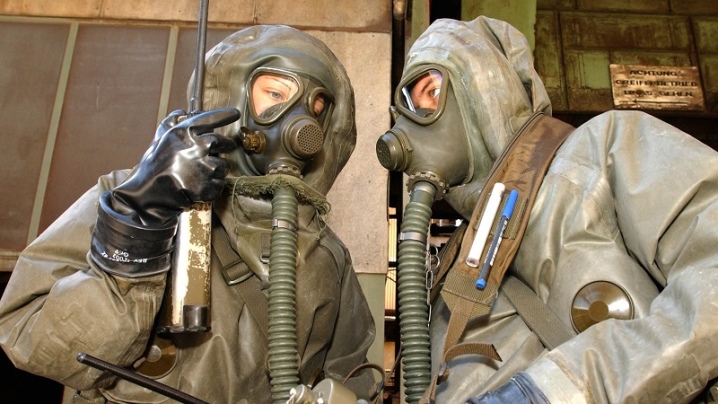
Observance of storage rules will help to protect the gas mask from various damages as much as possible. The PS should be kept only in a closed box in a room where the temperature does not drop below 50 degrees and does not rise more than 50 degrees. It is imperative that before using the gas mask, if it was in the cold, it should be kept in the living room for some time so that it reaches room temperature. In no case should the gas mask be exposed to sunlight.
Hose gas masks have many advantages. Yes, they are not compact, but at the same time they protect a person much better from the negative effects of toxins in the air. A prerequisite for using a gas mask is to observe safety precautions. For most devices, the safety precautions are common, but several instructions are considered for the gas mask gas mask, namely "before starting", "during operation", "in emergencies" and "at the end of the work process".
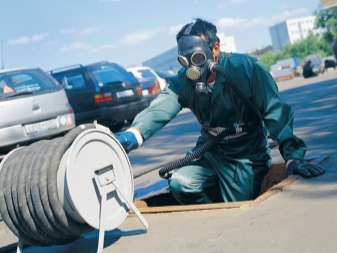
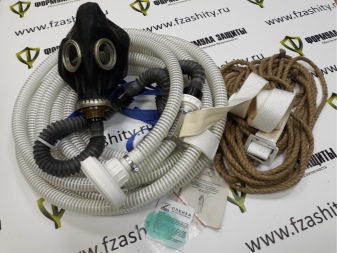
First of all, the safety requirements before starting work are considered. Each specialist takes a gas mask, assigned under his own name. The head of the section checks products for mechanical damage
It is important that the gas mask fits snugly to the face - thus, it will be possible to exclude the penetration of harmful toxins under it. The frequency of checking the potential of the apparatus should occur every six months.
Employees with an overdue gas mask check are not allowed into production. The length of service of the PS depends entirely on its owner. Improper care will lead to rapid wear.
Before starting work, the specialist and his understudy should discuss the communication symbols in order to avoid accidents. Next, you need to get acquainted with the safety precautions that should be observed in the work process. The period of a one-time stay in a hose gas mask should be no more than 30 minutes, after which the employee needs to take a break. As a safety net, each specialist with a gas mask should have 1 or 2 understudies who are waiting for him outside and watching the signals.

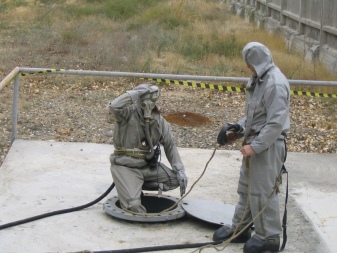
However, if the understudy needs to run into the contaminated zone, then safety requirements in emergency situations come into play. Substitutes, as prescribed in the instructions, send certain signals to those working in the air pollution zone at short intervals. If there is no answer to them, the back-ups must immediately remove from the premises an employee in an emergency. In the event that the rope gets stuck, the understudy, having put on the equipment, must run inside and help the person to leave the toxic area.
After the working process, according to safety measures, the gas masks must be cleaned of dirt and dust, the mask must be wiped dry with a clean cloth. If necessary, rinse with warm water or soapy water, then dry the product flat. The remaining elements of the gas mask are also dried. Further, a detailed inspection of the product for mechanical damage is carried out. After that, the gas mask is placed in a suitcase and sealed.


In the next video, you will find an overview of the PSh-20S hose gas mask with a PPM-88 mask.
Varieties and labeling
Standard equipment includes the following:
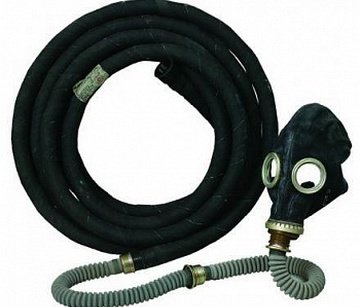
- Helmet mask.
- Two corrugated tubes.
- Reinforced hose of a certain length.
- Dust filter.
- Safety belt.
- Signal rope.
- Duct mounts (in clean area).
- Bag / case / drum / suitcase for storage.
In the case of the air-pressure model, the equipment is complemented by a blower, fan or compressor.
The two main isolation hose gas masks are PSh-1 and PSh-RV
... The first one is self-priming, has a 10 m long hose. The second one is air-pressure, works by means of an air blower, it is equipped so that it can be used by two people at the same time. Available with 20 m, 40 m hoses.
Usually, these two designs are the basis for numerous modifications that differ from each other in quality, type of material, length of air ducts, and some technical characteristics.
They are classified according to the level of protection according to the class of the filter used. There are three classes.
They are determined by the degree of permeability of the filter.
-
1 class
- permeability 20% -
2nd grade
- permeability 6% -
Grade 3
- permeability 0.05%
The gas mask is marked on a metal pad on the waist belt. It includes the manufacturer's name, GOST number, batch, device, date of manufacture (month and year).
Each of the components is marked separately
... Packaged products can be marked on the container itself, on the surface of a drum, case, or on a paper label.
Marking is done as follows:
- Manufacturer's name.
- Symbol.
- Product number.
- TU number.
- GOST number.
- Batch number.
- Date of manufacture (month and year).
- Recommendations for use and storage.
One of the most popular categories of RPE is respirators. What are the requirements for, we will tell you in a special publication.
The material of the working men's overalls depends on the scope of its application. What material is the men's summer jumpsuit sewn from? Find out from this.
The main function of the work gown is to protect the employee from the effects of negative factors of the working environment: dust and dirt. Read what overalls should be for a cleaning lady of office premises.
The only essential the difference between hose gas masks from each other is the length of their air duct
... Usually, hoses with a length of 10 m, 20 m, 40 m are used.
Since the devices are practically no different anymore, the choice depends on the size of the working room. If the room is small, then it is more profitable to use short hoses, because the blower cost can be saved, and the probability of damage is greatly reduced. However, if the room is large or located deep, for example, mines, chimneys in enterprises, then it is recommended to use hoses of such lengths that will provide access to a clean environment with a margin.
The filter is selected depending on against the risk of environmental pollution
... Its basic function is to protect the air duct from dust, but if there is a possibility of harmful substances entering the air, then it is better to choose filters of a higher class.
Before choosing a device, you need to make sure of its quality and reliability.
Varieties and marking of hose gas masks
The range of hose gas masks usually has the designation PSh, and then, depending on the length of the hoses, there are digital designations PSh-1, PSh-20, PSh-40. Models with twenty-meter hoses can be composed of 2 hoses and 2 masks, and can be used by two workers at once. In this case, the corresponding figure is added to the name: PSh-20-2.
The presence of a drum or bag for storing the hose is also reflected in the name of the gas mask model: for example, PSh-1S - a 10-meter hose with a storage bag, PSh-2B - a 20-meter hose on a drum.
Also, the masks of hose devices may differ: models with a helmet-mask are designated by the abbreviation SHMP, with a panoramic mask - PPM.
Each component of the hose gas mask has its own markings.
The name of the manufacturer (trade mark), the number of the standard, batch, product, and the date of manufacture are applied to the belt of the safety belt by branding on a metal lining.
On the front part, the marking is applied with indelible paint or relief, and contains the manufacturer's trademark, date of manufacture, size (height), standard number, mask identifier.
On filters, the marking is applied to a sticker on its surface: manufacturer's name (trade mark), class (filter efficiency), information (standard, class) on technical conditions, shelf life.
Our online store offers a wide range of hose gas masks, taking into account the variability of all characteristics. Here you can have such models as PSh-1S, PSh-1B, PSh-20S, PSh-20B, etc., and our specialists are always ready to provide advice and assistance with the purchase!


